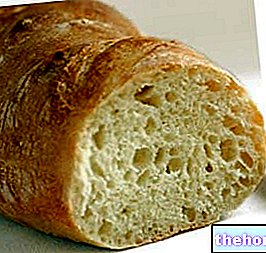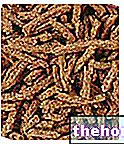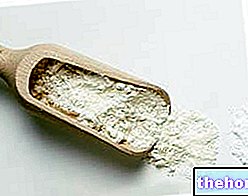What is that
Modified starch is produced by subjecting the starch contained in cereals and tubers to various types of chemical-physical treatments. In this way it is possible to enhance, if necessary, the application characteristics required by the various industrial sectors.
Depending on the alterations undergone, the modified starch can acquire resistance to overheating, cooling, cutting, swelling, gelatinization or acidity.
Use in Food
Modified starch is widely used in common food products; it is in fact added as a gelling and thickening additive to puddings, tomato sauces, mayonnaise and yogurt, which become more full-bodied acquiring semi-solid consistencies much appreciated by the consumer.
Food Additive
As food additives, modified starches are marked with the abbreviations:
E1404 - E1410 - E1412 - E1413 - E1414 - E1420 - E1422 - E1440 - E1450 - E1451 - E1452
In the labels of food products, the modified starch is however declared under the name of the category (therefore without the E code, nor the single denomination).
Safety

To confirm that this is not something dangerous, the directive that regulates its use in the European Union does not establish any maximum daily dose, although it requires the plant origin to be specified on the label (modified corn starch, modified starch of tapioca etc.).
Diet and health
Despite this quantitative freedom, the exaggerated consumption of modified corn starch can still create some problems; its use, in fact, raises the caloric content of the food and in fact decreases its genuineness and nutritional value.
Like the natural counterpart, in fact, it contains many calories, but is devoid of those nutritional factors - such as vitamins, proteins or minerals - present in the raw material it replaces. For example, the addition of modified starch to fruit yoghurt reduces the low-fat dry residue of the starting milk (which will therefore have less protein, vitamins, minerals and everything that is not fat).
It is no coincidence that modified starches are typically added to light foods to maintain the organoleptic qualities (flavor and texture) despite the reduction of nutrients.
Other Cereals and Derivatives Amaranth Wheat starch Corn starch Rice starch Modified starch Oat starch Bulgur Whole grains Corn Flakes Crackers Oat bran Bran Cus cus Amaranth flour Oat flour Buratto flour Spelled flour Buckwheat flour Corn flour Corn flour Millet Barley flour Quinoa flour Small spelled flour (Enkir) Rice flour Rye flour Sorghum flour Flour and semolina Whole wheat flour Manitoba flour Pizza flour Spelled Rusks Focaccia Nuts Wheat or wheat Wheat germ Burnt wheat Buckwheat Breadsticks Oat milk Rice milk Corn Maizena Malt Millet Muesli Barley Stale bread Unleavened bread and Pita Bread Carasau bread Egg pasta Rice pasta Wholemeal pasta Piadina Small spelled Pizza Pop corn Baked goods Quinoa Rice Basmati rice Converted rice White rice Rice Wholemeal Parboiled Rice Puffed Rice Venus Rice Rye and Horned Rye Semolina Semolina Sorghum Spaghetti Spelled Teff Tigelle Triticale OTHER ARTICLES CEREALS AND DERIVATIVES Categories Food Alcoholics Meat Cereals and derivatives Sweeteners Sweets Offal Fruit Dried fruit Milk and derivatives Legumes Oils and fats Fish and fishery products Salami Spices Vegetables Health recipes Appetizers Bread, Pizza and Brioche First courses Second courses Vegetables and Salads Sweets and Desserts Ice creams and sorbets Syrups, liqueurs and grappas Basic Preparations ---- In the Kitchen with Leftovers Carnival Recipes Christmas Recipes Dietary Recipes Light Recipes Woman's Day, Mother's Day, Dad's Day Functional Recipes International Recipes Easter Recipes Recipes for Celiacs Recipes for Diabetics Holiday Recipes Valentine's Day Recipes Vegetarian Recipes Protein Recipes Regional Recipes Vegan Recipes
















.jpg)











